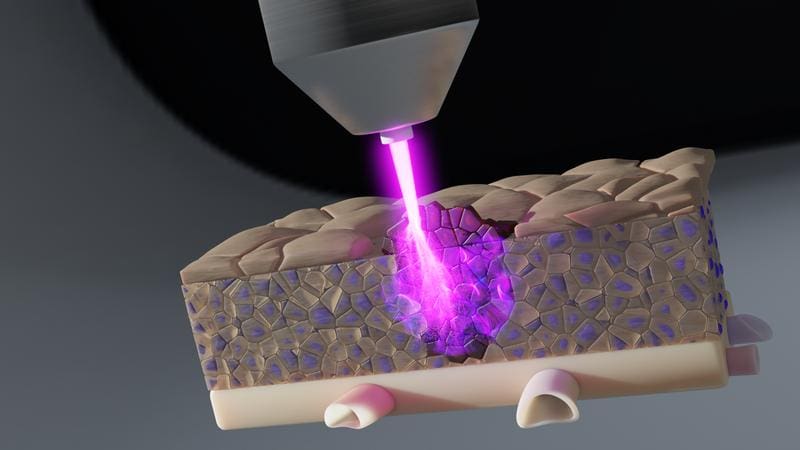Cold plasma shows potential against cancer in deeper tissue layers
Researchers at the Leibniz Institute for Plasma Science and Technology (INP), in collaboration with the University Medical Center Greifswald and the University Hospital Rostock, have demonstrated that cold plasma can also effectively fight tumor cells in deeper tissue layers. By using new tissue models, the effect of individual plasma components on tumor cells could be precisely investigated for the first time, as published in a recent study.
Cold plasma, an ionized gas, produces reactive oxygen and nitrogen species that can influence biological processes such as the growth or death of tumor cells. To decipher the complex mechanisms of action, the team developed a 3D hydrogel model that replicates tumor tissue. This showed that short-lived molecules such as peroxynitrite penetrate several millimeters deep into the tissue and have a strong effect on tumor cells. It was surprising that hydrogen peroxide, previously considered the central active ingredient, hardly plays a role, as the plasma effect was retained even after its removal.

Another model investigated the use of cold plasma in the aftercare of tumor surgery. Tumor cells at the edge of an artificial surgical wound were treated in a targeted manner. The results show that plasma specifically targets cells that have already spread to surrounding tissues, which could reduce relapses after surgical procedures. The studies were conducted with the medically approved plasma jet “kINPen”, which is already being used successfully in wound healing.
The findings mark an important advance in plasma medicine. Prof. Dr. Sander Bekeschus, head of the Plasma Medicine research focus at the INP, emphasizes that a better understanding of the effective molecules enables the development of targeted cancer therapies. In the long term, the method could make therapies more effective and gentle, especially by combining them with existing treatment methods. The results were published in the journal Trends in Biotechnology .
Original Paper:
Editor: X-Press Journalistenb├╝ro GbR
Gender Notice. The personal designations used in this text always refer equally to female, male and diverse persons. Double/triple naming and gendered designations are used for better readability. ected.




